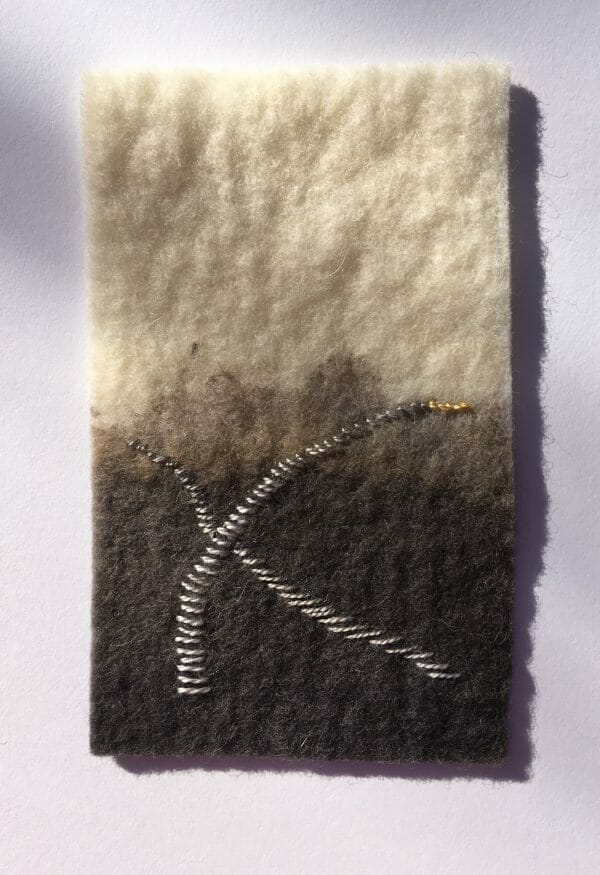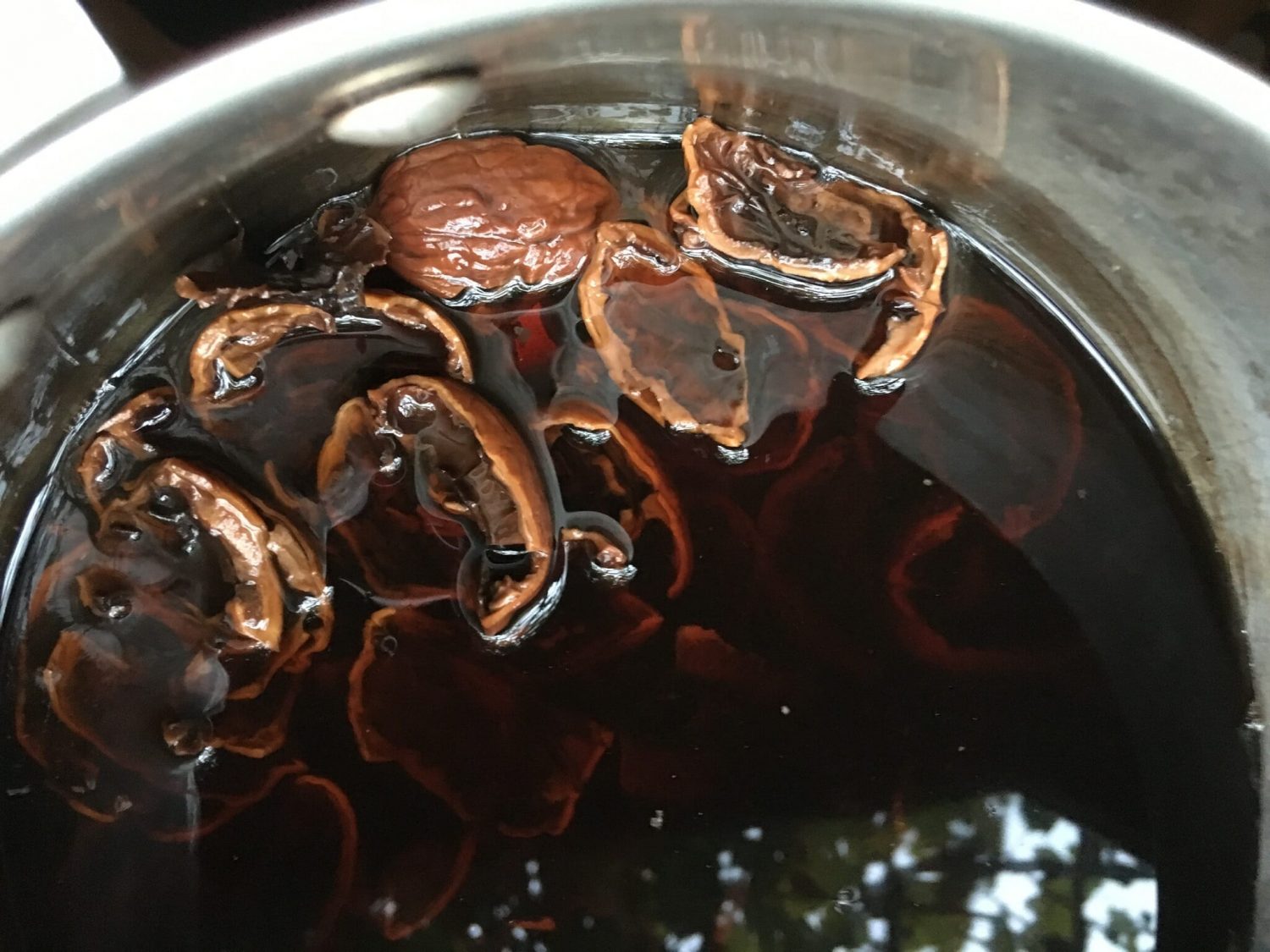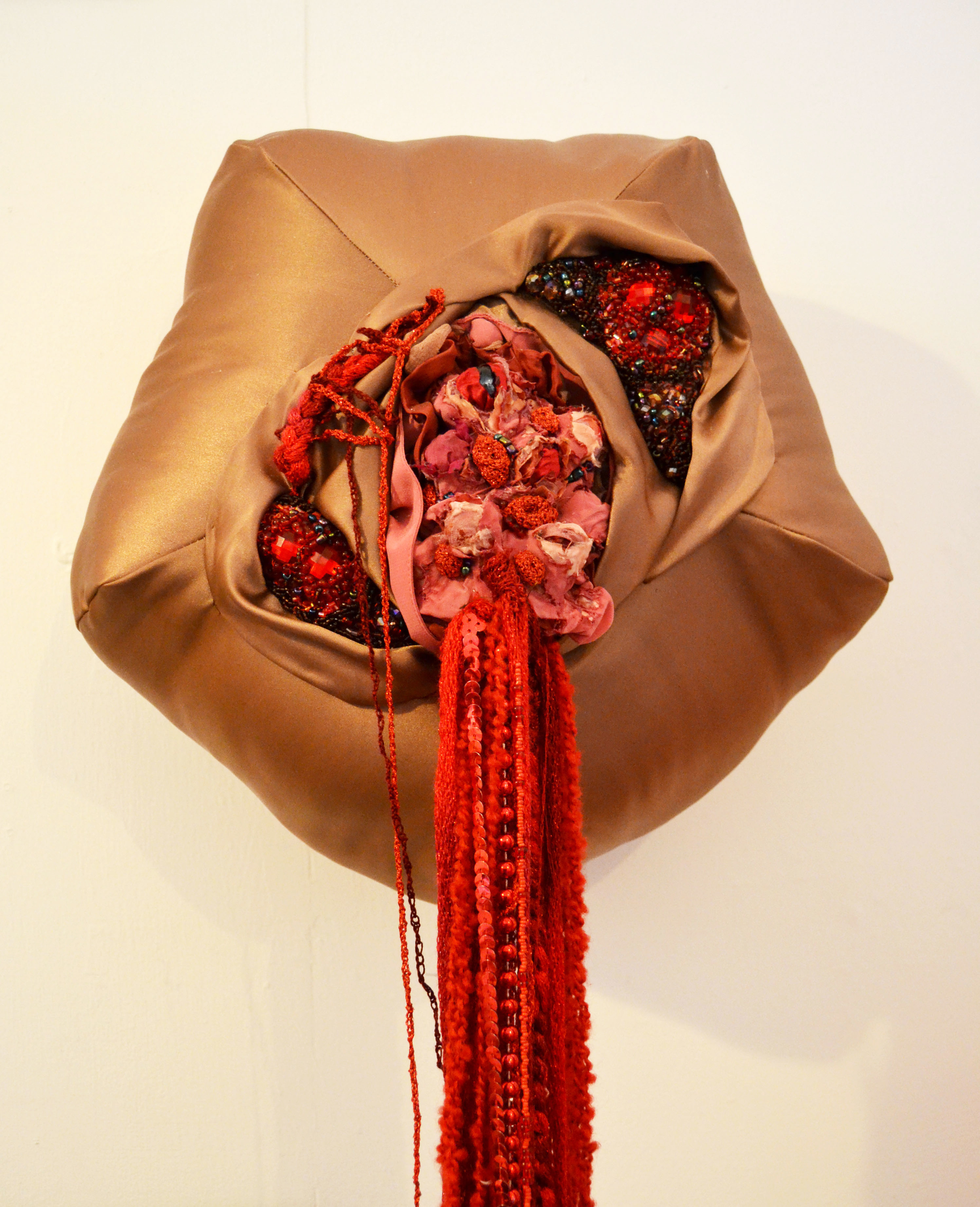Although there is a well-established and very sensible home-dyers rule that you don’t mix dyeing and food preparation equipment, that doesn’t mean you can’t get colour from the food in your kitchen. You shouldn’t use your cooking equipment but redundant saucepans and other equipment are not too difficult to source from charity shops, e bay, friends etc.. Try and find a stainless steel pan. You can use aluminium but it will probably affect the final colour.
The easiest materials to dye are animal fibres like wool and silk. Cellulose or plant fibres (cotton, linen, bamboo etc) are more difficult to dye and do need extra preparation. Most of my kitchen sink dyeing is with small amounts of silk which I source from Airedale yarns. The skeins of silk which I make by wrapping round my fingers are so small that they lend themselves to dyeing in regular saucepans. I tie them in a few places so they don’t get too tangled during dyeing.

Once you’ve made your skeins you need to weigh them. The silk skeins are so small that I weigh several at a time and then estimate the weight of each. Then soak them overnight in cool water to which you’ve added a few drops of detergent – ideally ph neutral detergent like Ecover washing up liquid. Rinse them thoroughly and they’re ready for the next stage.
One of the easiest kitchen dyes to use is walnut shells. This time of year they are quite easy to get hold of – I bought mine in Sainsburys and they were really easy to shell. To prepare most dyebaths you simply simmer the dye materials for 30 or 40 minutes in water, let it cool then strain it through a sieve. The general rule of thumb is that you use equal weight of dye materials to yarn. More dye material will give a more intense colour and less will give a lighter colour. The amount of water isn’t critical. You just need to make sure that there is sufficient water in the dyebath to allow the skeins to move around easily. So crack the walnuts open, eat or save the nuts (obviously), and put the shells in a pan of water to simmer for about 45 minutes to an hour. Leave them in the water to go cold (preferably overnight) then sieve out the shells.
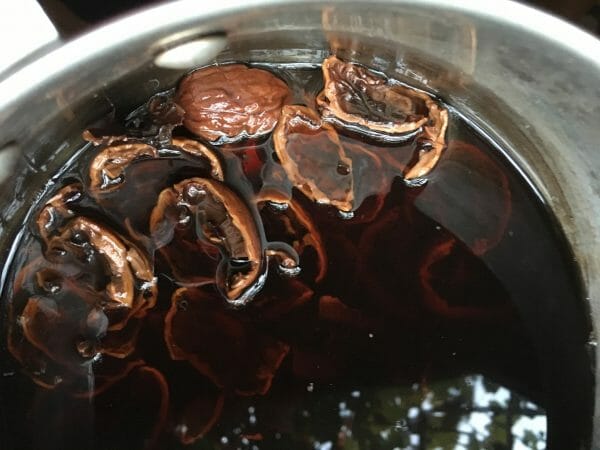
Your dyebath should now be cold and roughly the same temperature as your wet silk skeins. Put the thoroughly wetted skeins into the dyebath and slowly bring it to just simmering. I like to keep the temperature low with silk as it helps to retain the natural sheen. Keep lifting it out (with your special spoon reserved only for dyeing!) until you’re happy with the colour. But remember the colour will be less intense as it dries. Let the skeins cool then wash and rinse them. Once you’ve dyed your skeins you can let the dyebath cool and try it again with fresh skeins. The colour will be less intense but can still produce attractive shades. You may even be able to re-use the walnut shells to make a second dyebath, but the colour will be less strong.
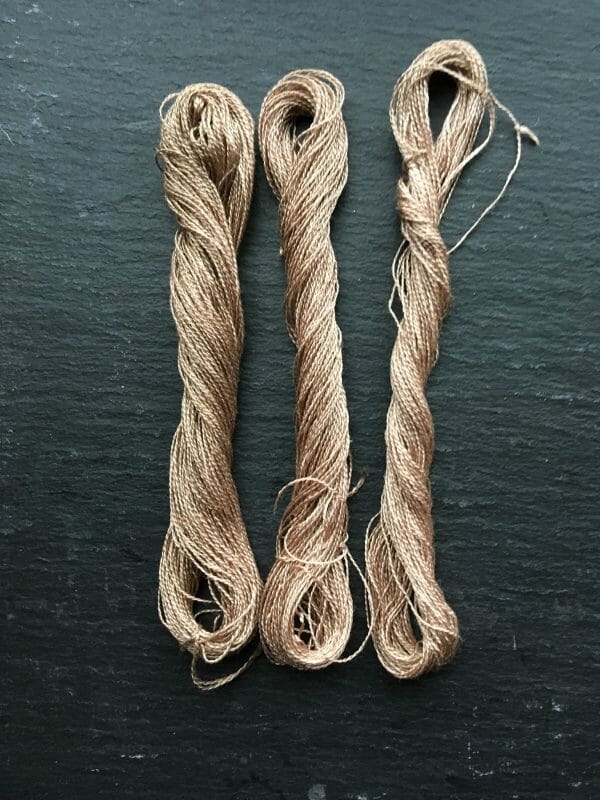
Favourite dye materials readily found in kitchens; onion skins (brown and red – but they do give different results), tea leaves, turmeric, pomegranate, walnuts, saffron (if you’re feeling flush) can all be used. More recently dyers have been using avocado stones, purple carrots and red cabbage. Don’t be fooled by beetroot though, it will only give you grey. And most berries will also turn grey eventually, even if the colours start out bright.
Walnut is called a substantive dye which means it doesn’t need special assistance to get and keep the colour. With most other dyes you’ll get a better and more lasting finish if you mordant them first. Mordant come from the French ‘to bite’ and it helps to fix the dye and keep it bright. The most widely-used method is to do this with alum or aluminium sulphate. (Alum is not poisonous but it is an irritant so needs to be handled with care.) You can get it from craft suppliers (and Amazon). You’ll only need a tiny amount of it for silk. I use the cool mordanting method for silk. You thoroughly dissolve the alum crystals in hot water using 10% of the weight of the fibre. (So, for example, 30g of fibre needs 3g of alum). Fill a pan or bowl with cool water, add the dissolved alum, stir well then add the wet skeins and leave to soak overnight. Rinse them out and they are ready for dyeing! There is more information about mordants and mordanting on Jenny Dean’s excellent website.
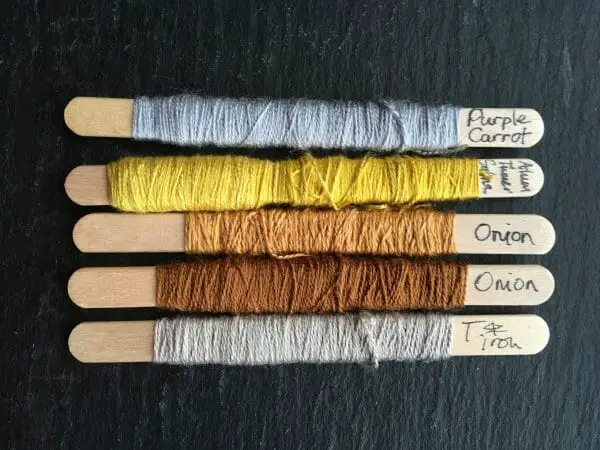
One of my favourite kitchen colours is made with used tea leaves mixed with some iron water (made with water, vinegar and rusty nails). It produces a shiny, silver colour which I’m currently loving to stitch with. Some people say you can also dye with red wine – but somehow there never seems to be any left in our kitchen to experiment with…..
